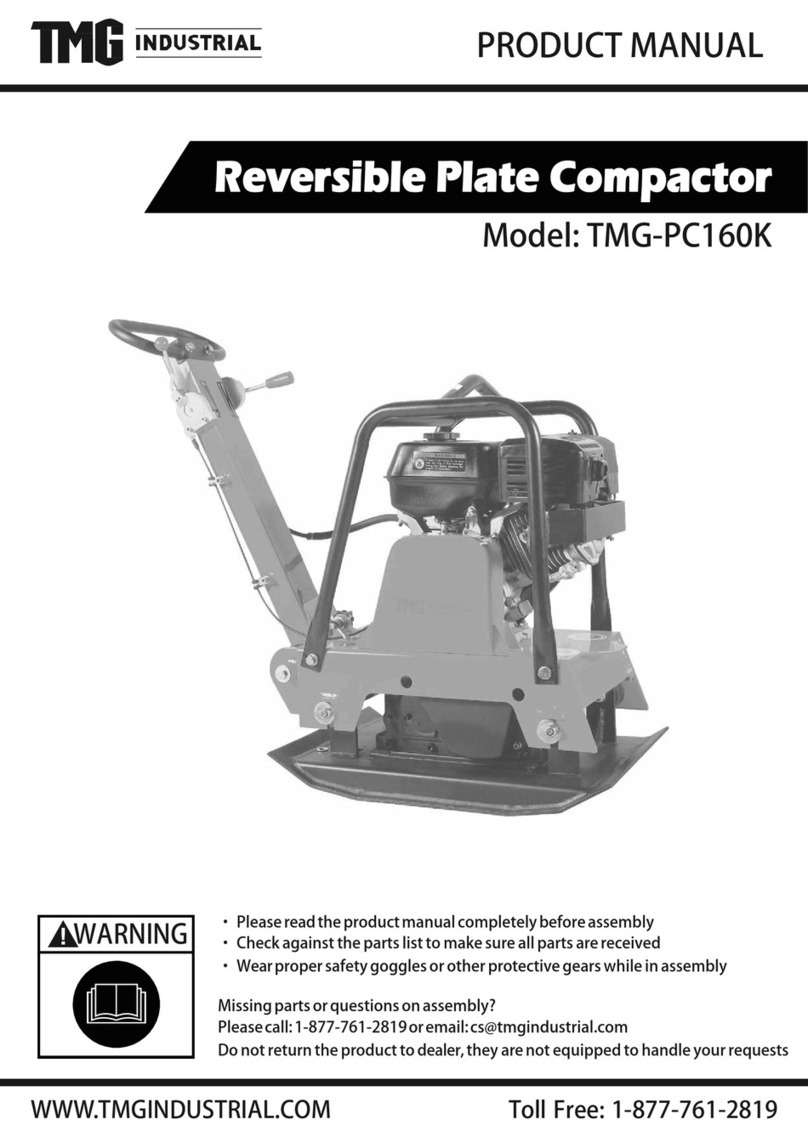
Italian
1. DICHIARAZIONE “CE” DI CONFORMITÁ
2. Nome e indirizzo Fabbricante
3. Nome e indirizzo della persona che conserva la
documentazione tecnica
4. Tipo: Piastre vibranti
5. Modello
6. Codice macchina
7. Numeridi matricola
8. Potenza installata netta <resa massima>
9. Livello di potenza sonora misurato (dB)
10. Livello di potenza sonora garantito
11. Livello massimo di pressione sonora
12. Valutazione di conformità in accordo all'annesso VIII
( procedura Garanzia di Qualità totale
13. Nome dell'organismo notificato
14. Rappresentante Autorizzato in Europa
15. Direttiva di riferimento
Direttiva 2000/14/CE su l'emissione acustica ambientale
delle macchine ed attrezzature destinate a funzionare
all'aperto
16. Dichiarazione
Le attrezzature riportate nel documento soddisfano i requisiti
della Direttiva 2000/14/CE
17. Altre Direttive Comunitarie di riferimento
18. Certificato di Conformità CE No:
19. Luogo e data della dichiarazione
French
1. DECLARATION « CE » DE CONFORMITE
2. Non et adresse du Fabricant
3. Nom et adresse de la personne qui défient les documents
techniques
4. Type du materiel: Plaques vibrantes
5. Modello
6. Numero equipement
7. Numéro de série
8. Puissance reseau <rendement maximal>
9. Niveau sonore mesure(dB)
10. Niveau sonore garanti(dB)
11. Niveau sonore maximum
12. Certification de conformite selon l'annexe VIII ( procedura
Garanzia di Qualità totale )
13. Nom et adresse de l'organisme notifié
14. Mandataire dans la Communaute Europeenne
15. Directive concernee
Est egalement conforme aux dispositions de la directive
<<emission sonores des equipements utilises a l'exterieur
des batiments>> 2000/14/CE et aux legislations nationales
la transposant.
16. Declaration
L'équipement de référence satisfait aux exigences de la
Directive 2000/14/EC
17. Autres directives communautaires concernees
18. Certificate deConformite CE numero:
19. Lieu et date de la declaratio
Spanish
1. DECLARACIÓN “CE” DE CONFORMIDAD
2. Nombre y dirección del fabricante
3. Nombre y dirección de la persona que guarda la
documentación técnica.
4. Tipo: Bandejas vibrantes
5. Modelo
6. Número de referencia del equipo
7. Numeros de serie
8. Potencia neta instlada <rendimineto maximo>
9. Nivel sonoro medido del motor ( dB )
10. Nivel sonoro garantizado del motor ( dB )
11. Máximo nivel sonoro de presión ( dB )
12. Evaluación de la Conformidad de acuerdo al Anexo VIII
( Prcedimiento de total garantía asegurada )
13. Nombre y dirección de la Entidad Notificada
14. Representante autorizado
15. Directiva relacionada
Directiva 2000/14/CE en relación a la emisión sonora en el
ambiente por equipos que trabajan en espacios abiertos
16. Declaración
El equipo referido en este documento , cumple con todos los
requerimientos de la Directiva 2000/14/EC
17. Otras Directivas Comunitarias relacionadas
18. Certificado de Conformidad CE Nº
19. Lugar y fecha de la declaración
































